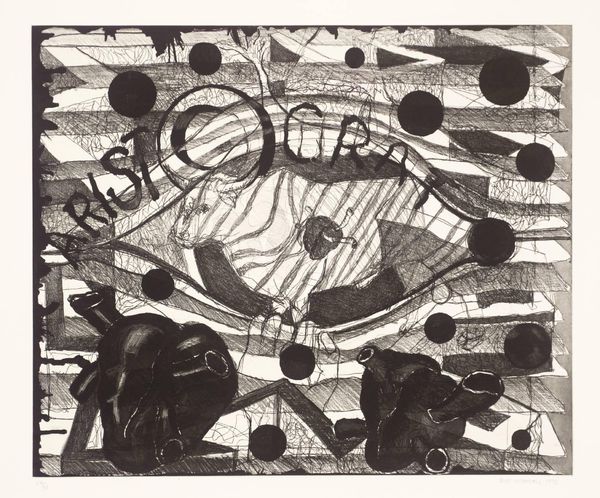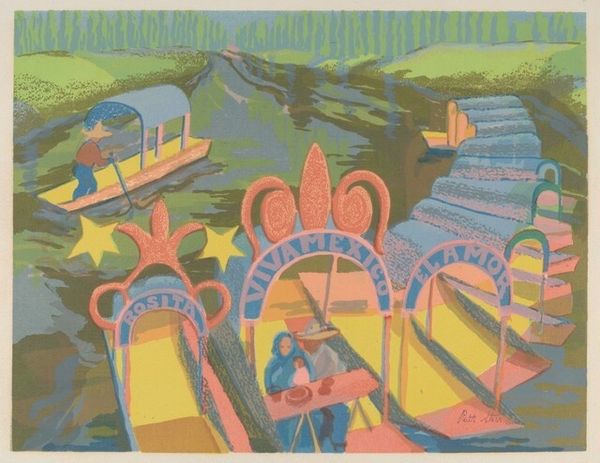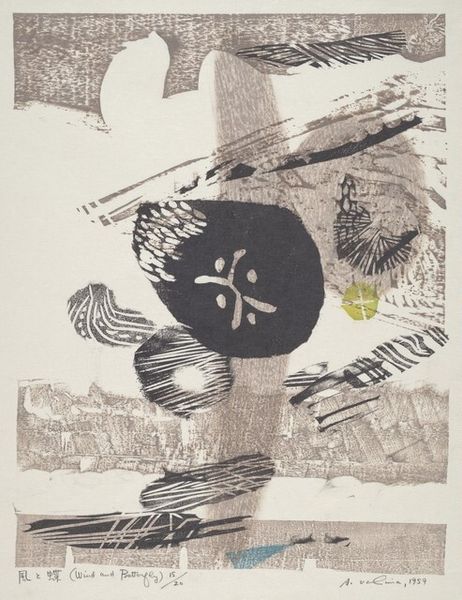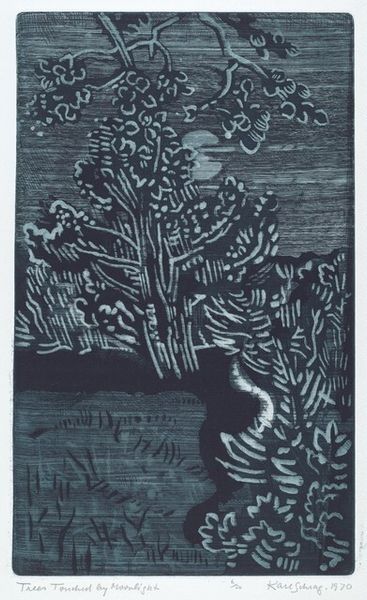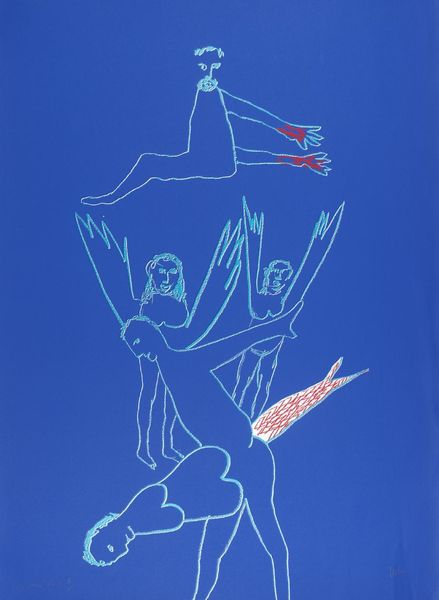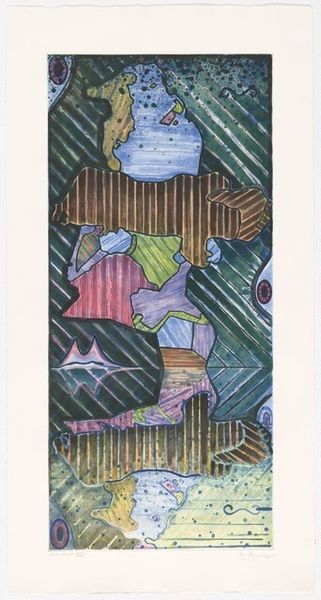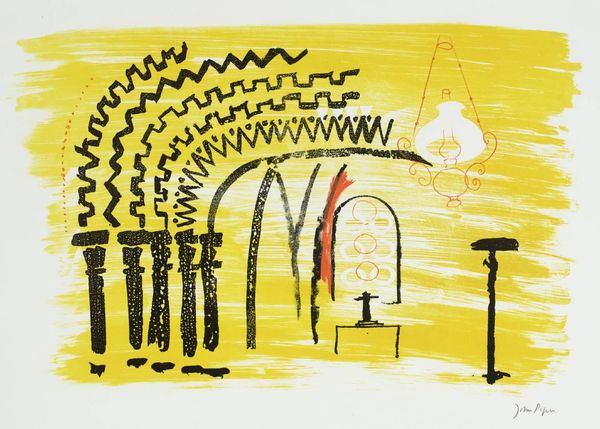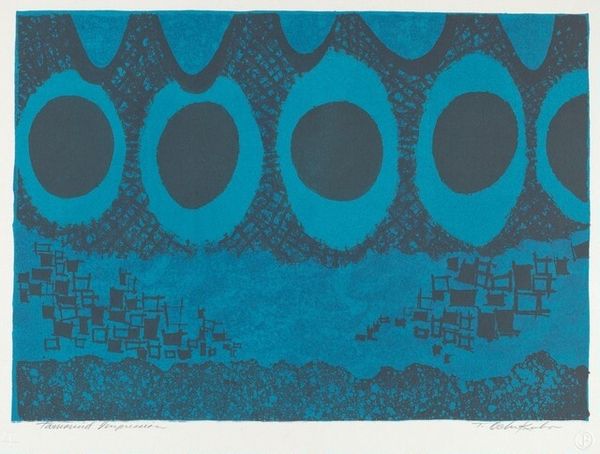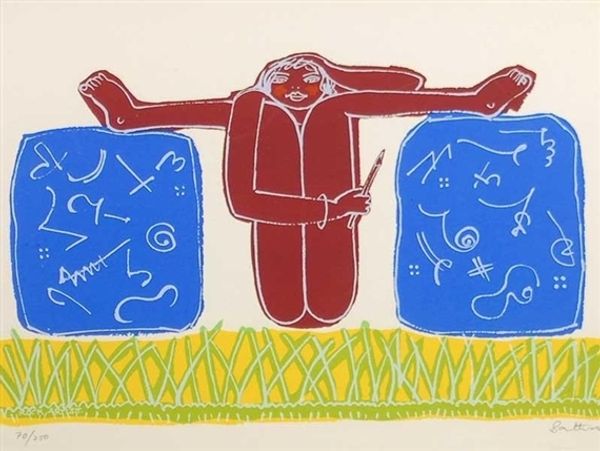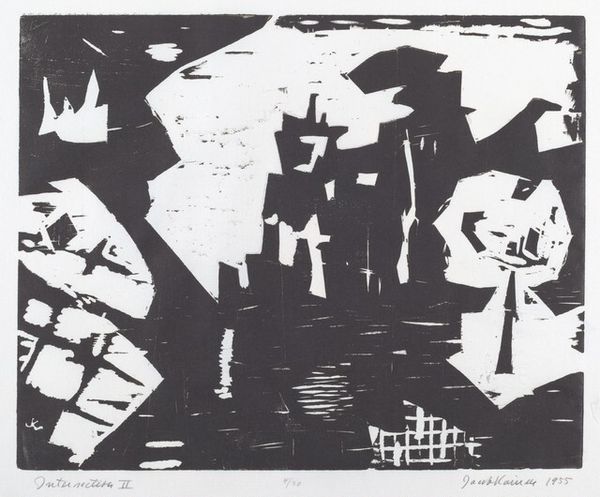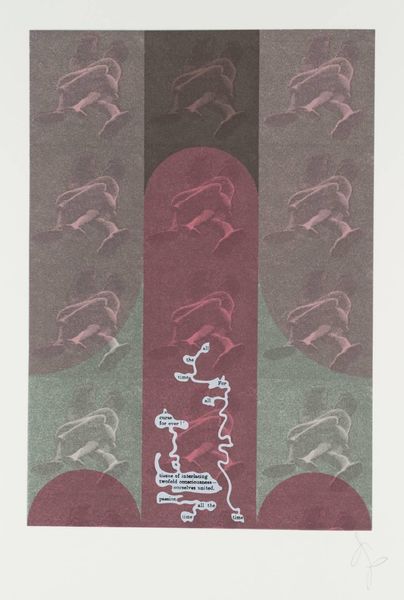
graphic-art, print
#
graphic-art
# print
#
figuration
#
line
#
cityscape
Dimensions: Image: 330 x 437 mm Sheet: 440 x 608 mm
Copyright: National Gallery of Art: CC0 1.0
Editor: This is Fred Rosebury's print, "Dream in a Vacuum Pump" from around 1965. It’s a really interesting graphic piece; I am curious how its composition creates an unsettling sense of societal critique. How do you interpret this work, considering its title? Curator: Well, the title itself, "Dream in a Vacuum Pump," suggests a disruption, doesn’t it? Consider the period. In the mid-1960s, there was growing disillusionment with established societal norms, technological advancements, and post-war optimism. The print visualizes this anxiety. Editor: It’s like the flowing lines hint at turmoil around more rigid structures, the house and figures walking toward the city... Curator: Exactly! Rosebury critiques ideas of home, progress, and community, right? Look at the faceless figures moving robotically towards a city that lacks individuality. It evokes the existential anxieties and loss of identity explored by thinkers of that time, the very real fear of progress. The small details really create an interesting narrative. What are your thoughts? Editor: I didn’t think about it that way, about those anxieties playing out on those human forms. They remind me of representations of bodies in modernist and surrealist paintings, distorted. Is this work arguing against established society? Curator: Perhaps not arguing "against" it, but presenting a critical commentary. Rosebury's personal life, deeply involved in socialist movements, informed his art. It urges us to confront uncomfortable truths about our society and what we risk in blindly following established paths. It critiques systems. Editor: That's fascinating! It’s eye-opening how social and political turmoil influenced Rosebury's style and the overall narrative. Curator: Absolutely. The "dream" aspect could suggest an aspiration for a more equitable world, trapped and suffocated within a metaphorical 'vacuum pump' of societal structures. Looking at works such as this helps to bridge the gap between our history and the current zeitgeist.
Comments
No comments
Be the first to comment and join the conversation on the ultimate creative platform.

